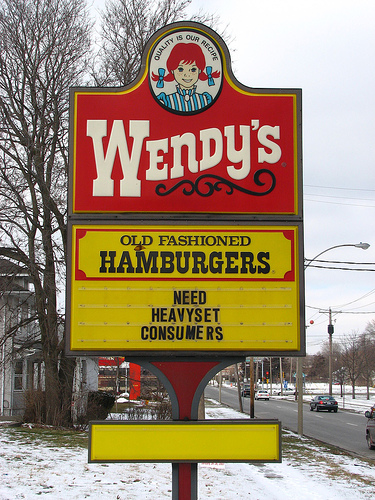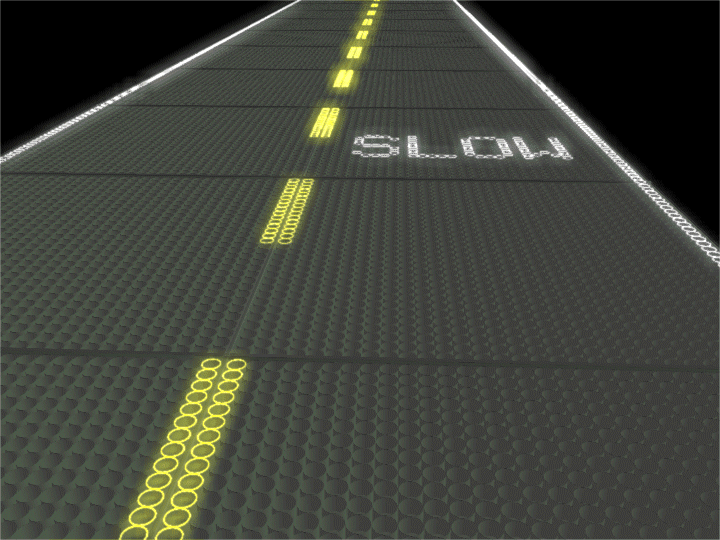A while back I mentioned Solar Roadways, a clean-energy idea that appears kind of kooky, at least on the surface. (See what I did there?) The notion is to replace paved surfaces with rugged, specially built solar panels.
The Solar Road Panels would contain not just solar panels but LED lighting (to enable real-time communication with drivers), heating units (to prevent icing), high-voltage power transmission lines, and even electric-vehicle recharging stations. It’s transportation, power, and grid infrastructure in the same place.
At the limit, if all paved surfaces in the U.S. were replaced with 15% efficiency solar panels, the resulting distributed power network could provide three times the electricity the nation consumes, with zero carbon emissions and no additional power grid infrastructure. (Yes, I’m aware manufacturing, installing, and maintaining it would generate emissions, as with any infrastructure project.)
So crazy it just might work? Apparently the Dept. of Transportation thinks so: Solar Roadways has received a $100,000 contract from DOT to build a prototype:
The Solar Roadways will collect solar energy to power businesses and homes via structurally-engineered solar panels that are driven upon, to be placed in parking lots and roadways in lieu of petroleum-based asphalt surfaces.
The Solar Road Panels will contain embedded LEDs which “paint” the road lines from beneath to provide safer nighttime driving, as well as to give up to the minute instructions (via the road) to drivers (i.e. “detour ahead”). The road will be able to sense wildlife on the road and can warn drivers to “slow down”. There will also be embedded heating elements in the surface to prevent snow and ice buildup, providing for safer winter driving. This feature packed system will become an intelligent highway that will double as a secure, intelligent, decentralized, self-healing power grid which will enable a gradual weaning from fossil fuels.
… Fully electric vehicles will be able to recharge along the roadway and in parking lots, finally making electric cars practical for long trips.
It is estimated that is will take roughly five billion (a stimulus package in itself) 12′ by 12′ Solar Road Panels to cover the asphalt surfaces in the U.S. alone, allowing us to produce three times more power than we’ve ever used as a nation – almost enough to power the entire world.
There are some cost estimates on the site. They argue that roadways could be solarized for roughly the same net cost we’d pay for power plants, grid infrastructure, and asphalt.
As usual with large-scale, visionary ideas like this, it’s difficult to agree on a cost-benefit analysis. The costs are mostly quantifiable — multiply cost of panel by 5 billion, etc. — but the benefits are not. Many are speculative or unpredictable, many are avoided costs. What are the benefits of not building coal plants and grid infrastructure? Not paying for accidents from ice and wildlife? Not having centralized, brittle power infrastructure?
New infrastructure does not merely replace old infrastructure; it provides a platform for new kinds of innovation. Who knows what would grow out of massively distributed power, a national smart grid, or an electrified vehicle fleet? What would it mean to have an overabundance of clean electricity?
Decisions about projects of such scope can’t be made with a mathematical formula. There are irreducible elements of aspiration and faith, values and ethics, fear and desire — just as there were in America’s decisions to wage war, guarantee health care for seniors and the poor, go to the moon, or extend broadband internet access. Conservatives and Blue Dogs tell us we can’t afford it, presuming a shared understanding of what it’s worth.
Think not just about solar roadways, but more generally about the goal of clean, abundant energy, economic renewal, and a livable climate. What’s that worth? And why do the Blue Dogs get to decide?




